Julien Creuzet's France Pavilion: a total artwork for thinking about a different world
It happens very rarely to enter an immersive environment and completely abandon oneself to one’s surroundings. It happened to me at the Venice Biennale, after facing a long queue (as is now customary to visit certain pavilions), entering the Pavilion of France, at the Giardini, on the occasion of the 60th edition of the Art Biennale. It was atotal immersion in Julien Creuzet’stotal work, which, however, I would describe as different from those that have been fashionable in recent times to present in an innovative way a particular artist of the past, above all Monet, Van Gogh and Klimt, and which find space in “container” places now devoted to this purpose. If here on the walls, floor and ceiling are projected video mappings with high-definition digitized images of the works of the artist protagonist of the immersive event and details of the same close up to the nth dimension to bring the visitor, usually positioned in the center of the room, into the art of that particular painter, all accompanied by soundtracks in Dolby Surround, the immersion proposed by the French pavilion is more mental: once I sat at the edge of the halls of which the building is composed, having passed the long queue outside and having walked freely, in no predefined order, through the three rooms, my mind became completely abstracted from thoughts and the world by letting myself be transported (and also relaxed) by the sequences of the musical work that are repeated on a loop inside the entire pavilion, while images of objects floating in water, projected on screens, one for each room, accompany the melodies with the same calm, thus making the whole thing extremely fluid and relaxing with a studied continuity.
In fact, another key word of the French project is undoubtedly continuity, because going through the different “rooms” of the pavilion, one does not perceive any detachment, any rupture, but rather everything is uniform, heterogeneous, both visually and sonically. The soundtrack refers to the very title of the project, which is also particular because it is in poetic form, and already here the great themes of mythology, nature andwater resonate. “Attila cataracte ta source aux pieds des pitons verts finira dans la grande mer gouffre bleu nous nous noyâmes dans les larmes marées de la lune,” which in Italian sounds roughly like this: “Cataract of Attila your spring at the foot of the green peaks will end in the great blue abyss of the sea where we drowned in the tidal tears of the moon.” It is an invitation to freedom and interpretive diversity that involves, starting from the textual and then sound dimension, the entire imaginative world into which the artist intends to catapult the visitor, with its colors, shapes, sounds, and movements. “This way of seeing is undoubtedly what Julien Creuzet seeks to offer through the experience of his work. It describes immersion in a poetry of shapes and sounds, volumes and moving lines, colorful encounters that form new languages: an experience to be lived to the fullest,” reads the pavilion description on the Biennale’s official website. “A sensitive and poetic understanding of the world” that “offers a softer gaze with which to approach the multiple ecologies of life.”

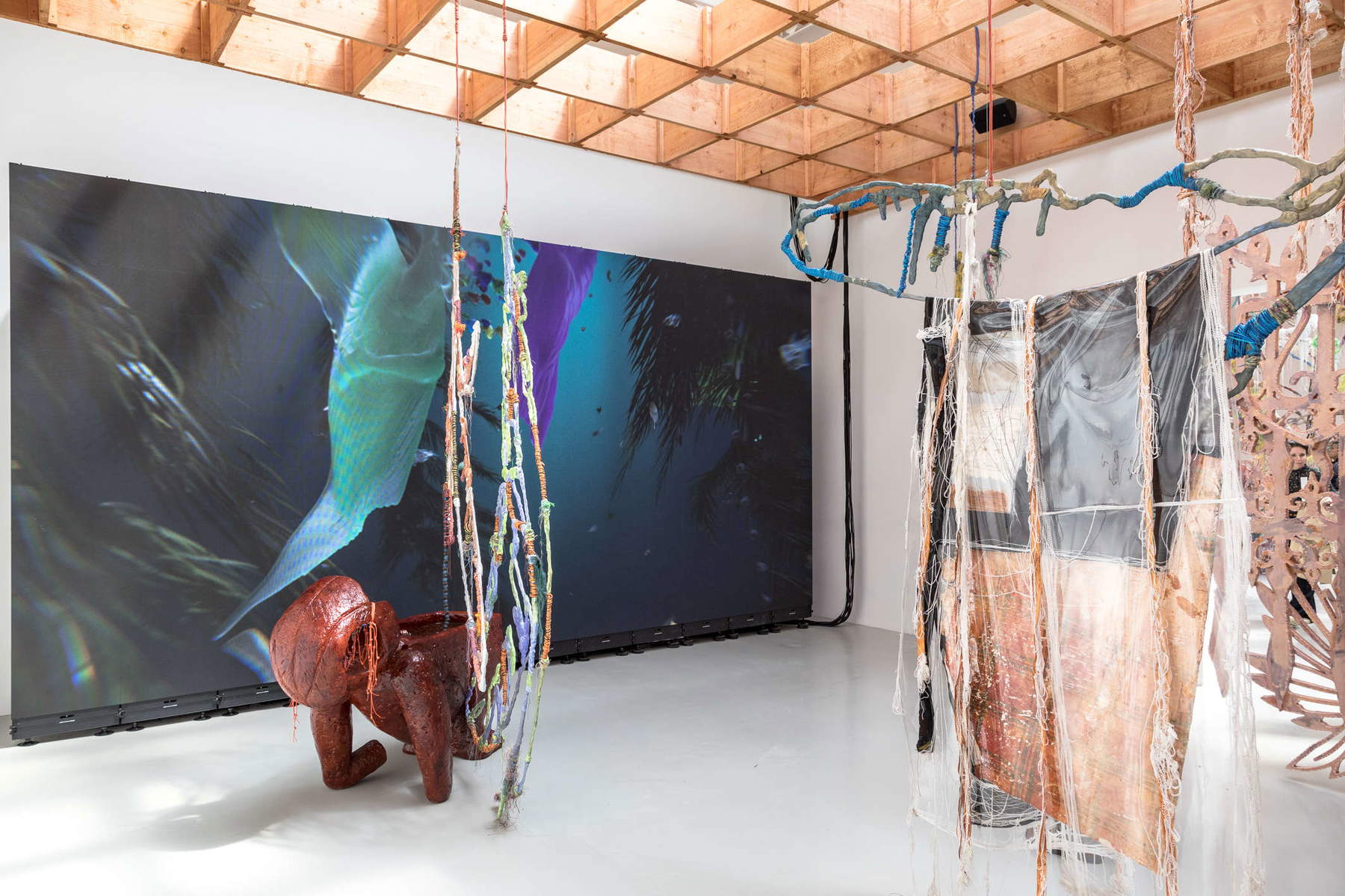
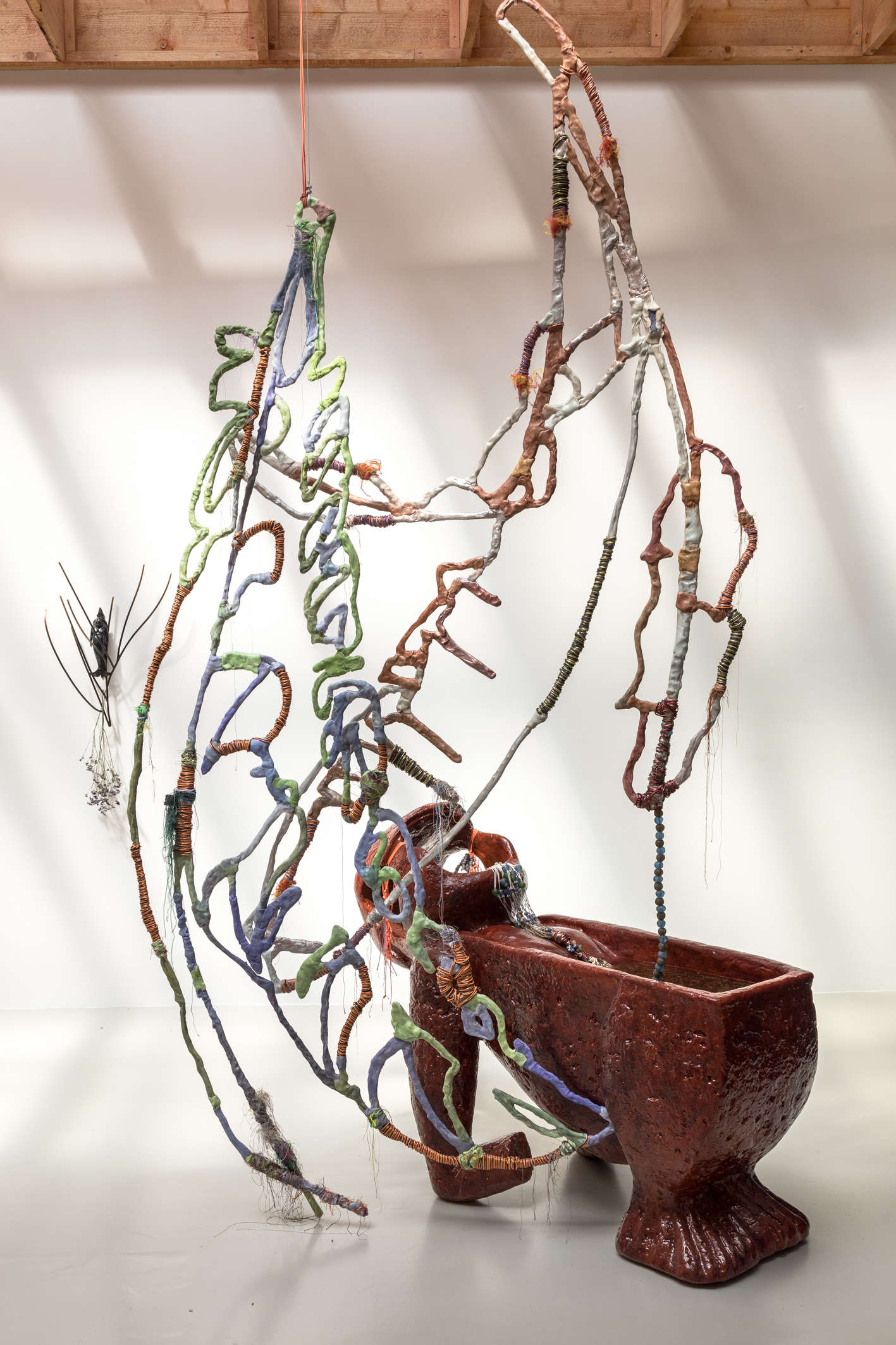
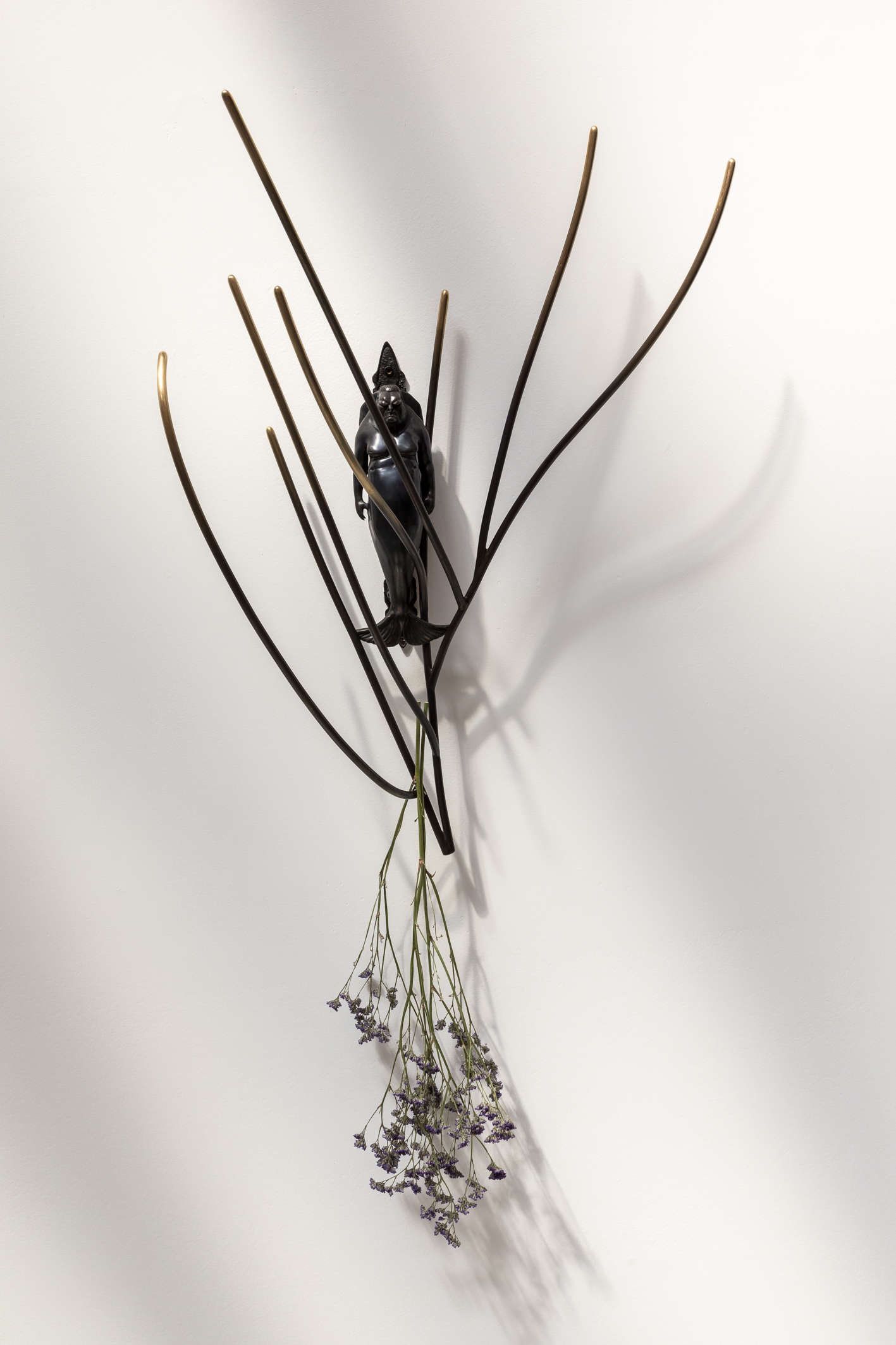
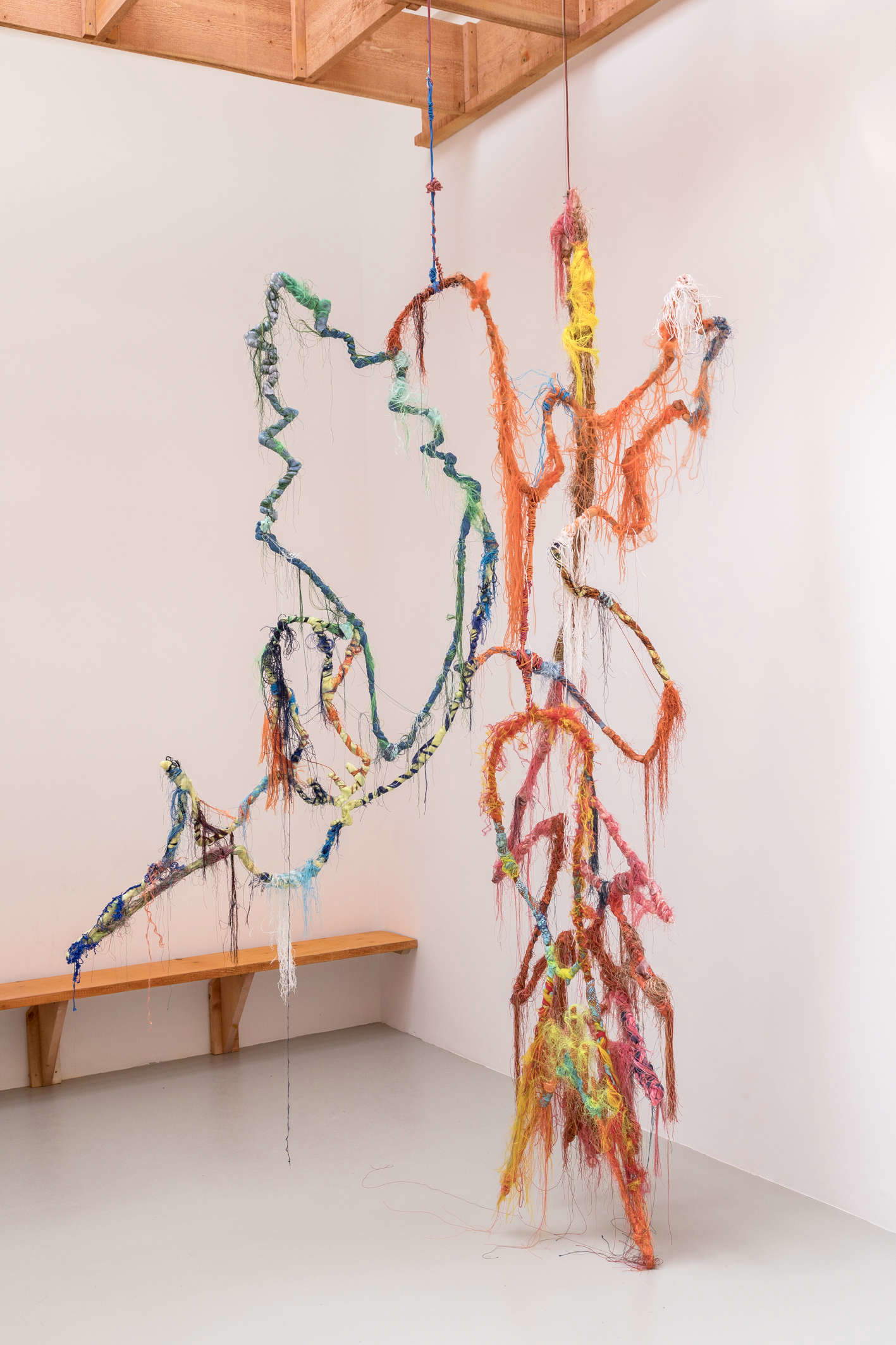
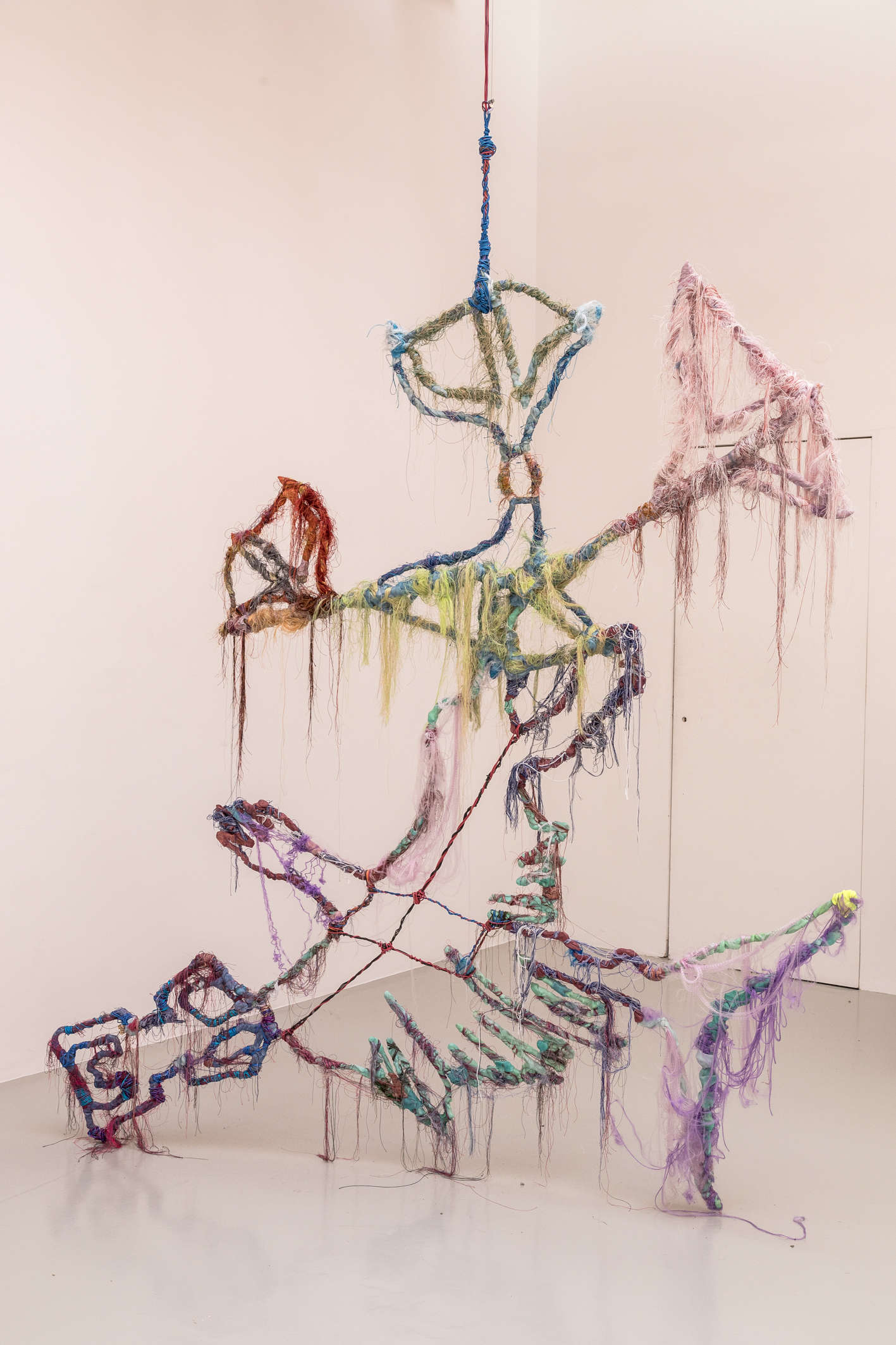
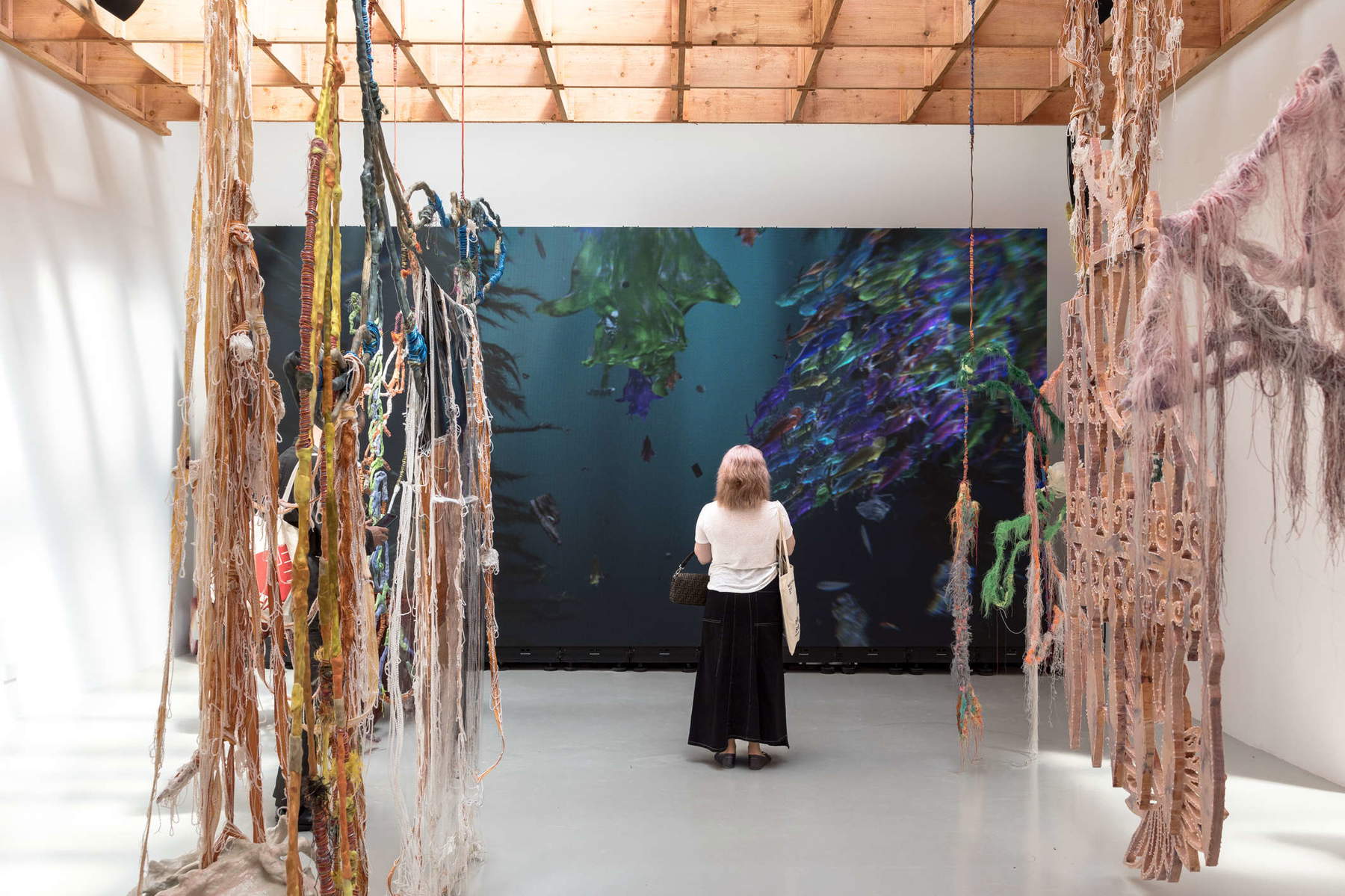
France chose to be represented at the 60th Venice Art Biennale by one artist: Julien Creuzet (Le Blanc-Mesnil, 1986), a French-Caribbean artist who lives and works in Montreuil. Nominated for the Marcel Duchamp Prize 2021, Creuzet brought to the Venice Biennale a project curated by Céline Kopp, director of the Magasin, the National Center for Contemporary Art in Grenoble, and Cindy Sissokho, curator, cultural producer and writer, through which to reflect on what it means to be a “foreign citizen,” aware of being part of a much more complex French history. It is with this question, that of being considered a foreigner within one’s own country, that the France pavilion has chosen to interpret the Biennale’s Strangers Everywhere theme. Creuzet’s response is to try to emphasize the issue, “physically and symbolically transporting people into a reality that has little to do with cultural institutions and policies. It is probably unrealistic, but it might help change some perspectives in the future.” A project, then, that wants to avoid global narratives and cultural reductionism, and invites visitors, it reads, “into a fluid-irrigated space in which a radical and collective imaginary opens up, populated by divine presences and connected to Venice through its water.” “What I want to offer visitors to this pavilion,” the artist himself explained, “is a complex and sensory confluence zone, a deeply lived experience. For me, this is the space. It is a crossroads, a place where everything can be encountered, especially oneself.”
The imaginative world in which Julien Creuzet wants visitors to immerse themselves is made up of more than eighty sculptures of different types, six videos, seven musical sequences, to which a fragrance is added. Visually, in fact, floating images that appear on the screens are joined by particular works of different shapes and various materials that resemble relics that an ocean tide has brought back to the surface and that in most resemble plant and animal elements. One then finds oneself walking among these large-scale creations made of metal, plastic, textile threads, textiles, annatto (a dye from a wild plant in the Amazon), fiberglass, beads, and some bronze works, hanging from the ceiling. Julien Creuzet’s forms, as stated in the pavilion presentation, “arise from a space of emancipation, which must be intimately felt in order to truly see,” “a moment of reconciliation with our senses, as well as a space in which to be untranslated and free.” Thus, the artist intends to offer the visitor animmersive and multi-sensory experience in the forms and materials of this free world, with which to get in touch in order to truly understand it and in which to ultimately find oneself. Intellectual intent of profound finesse that truly succeeds if one really indulges one’s mind in the forms, colors, images and sounds.
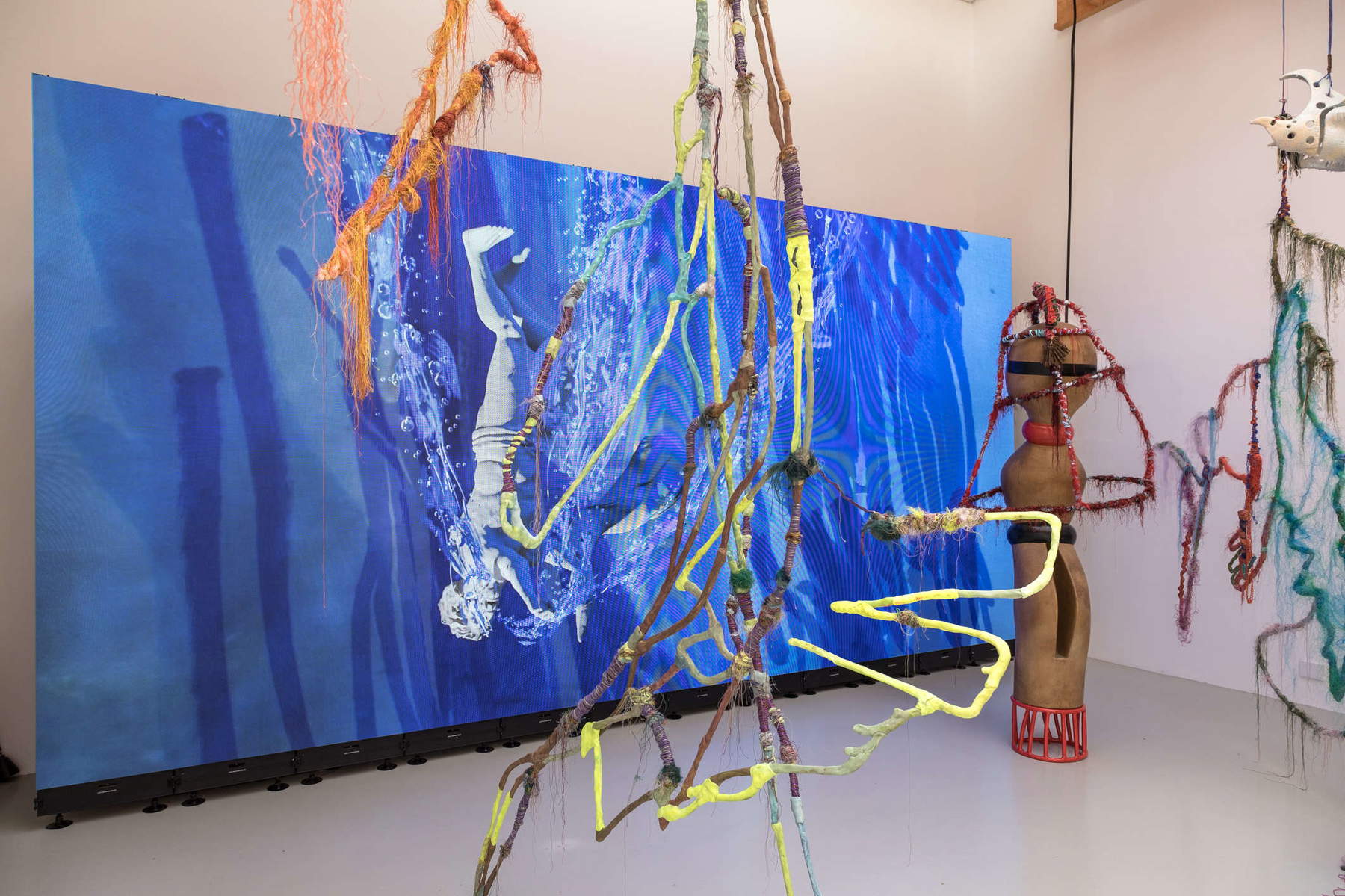
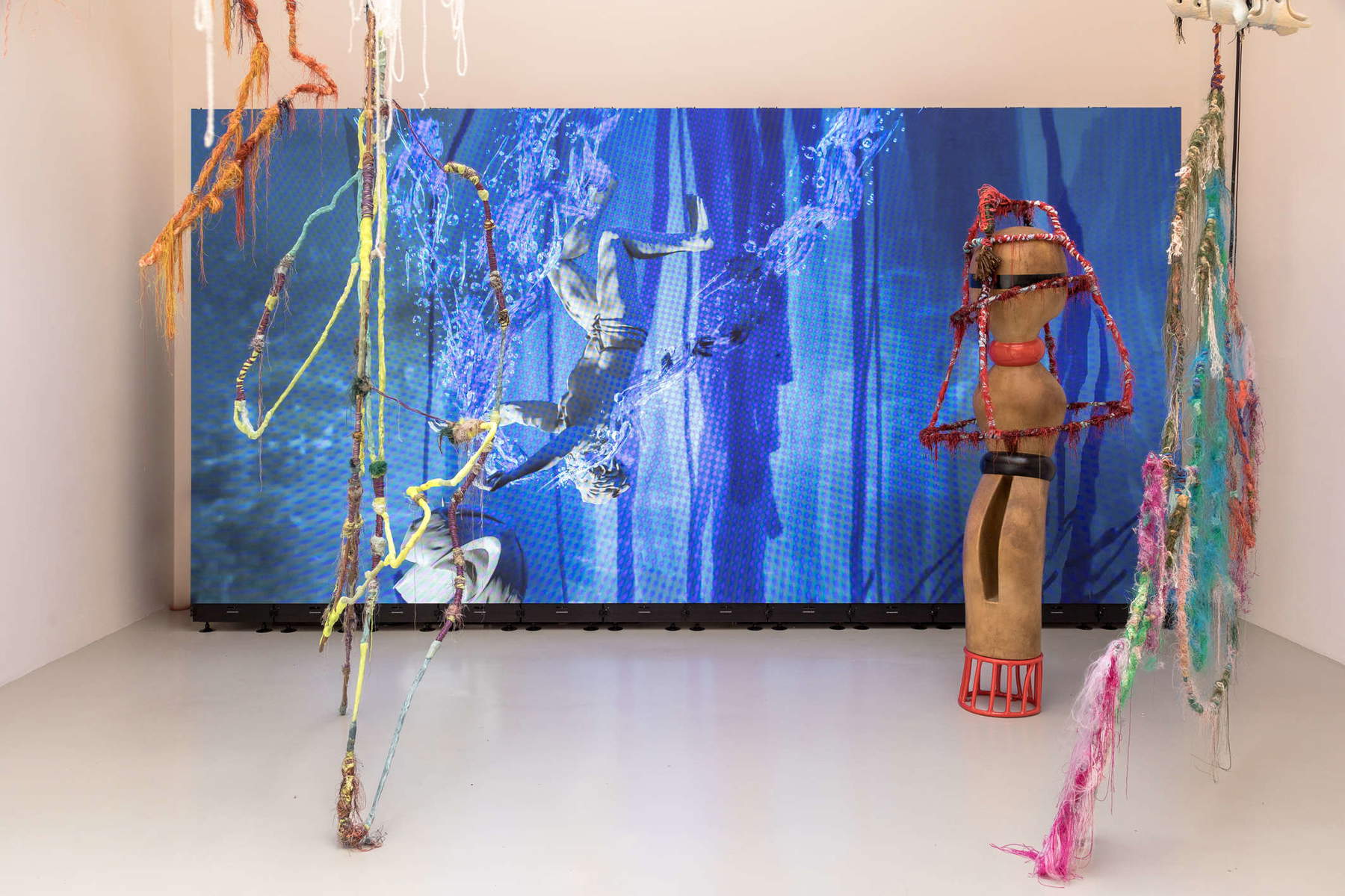
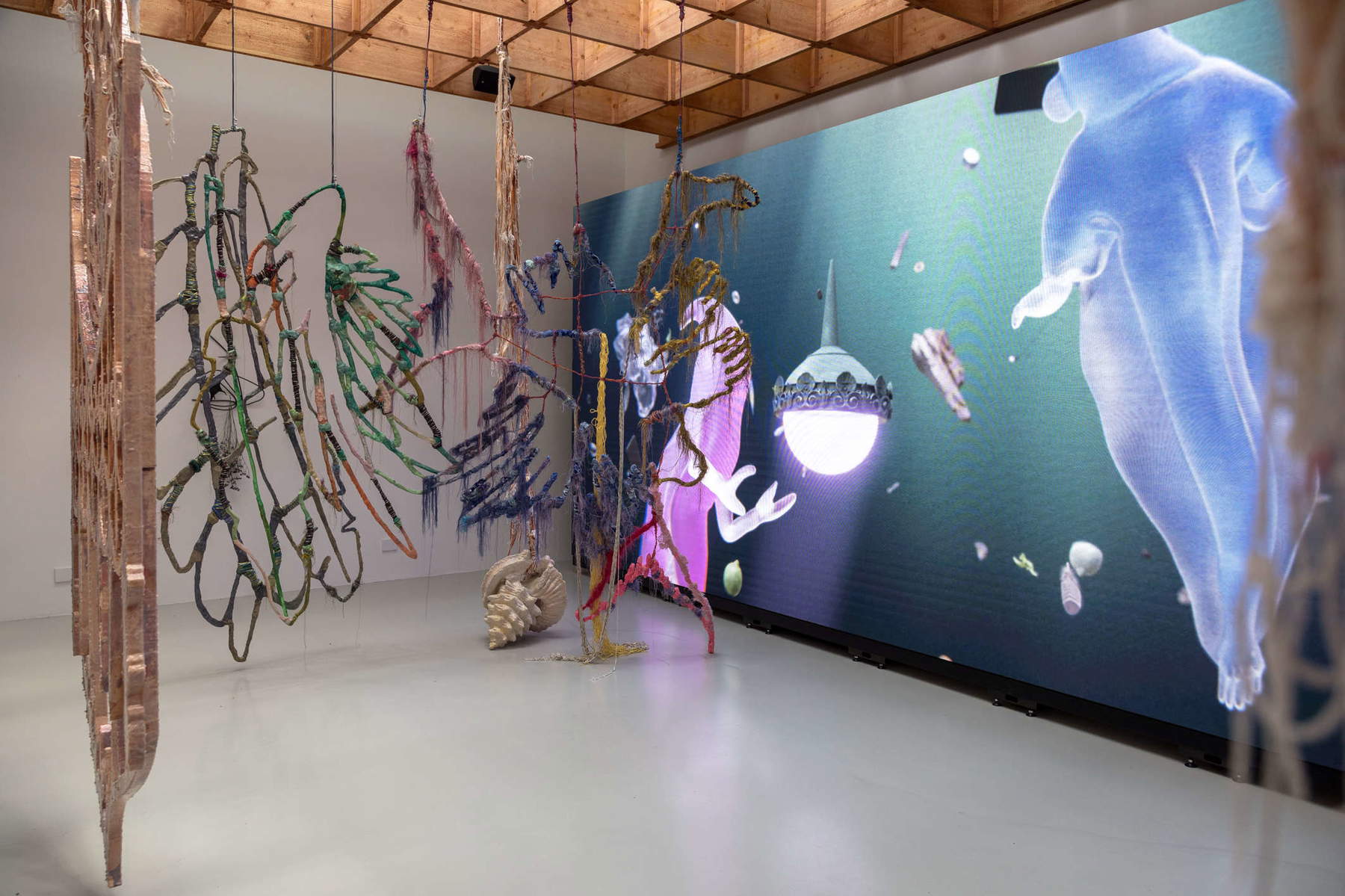
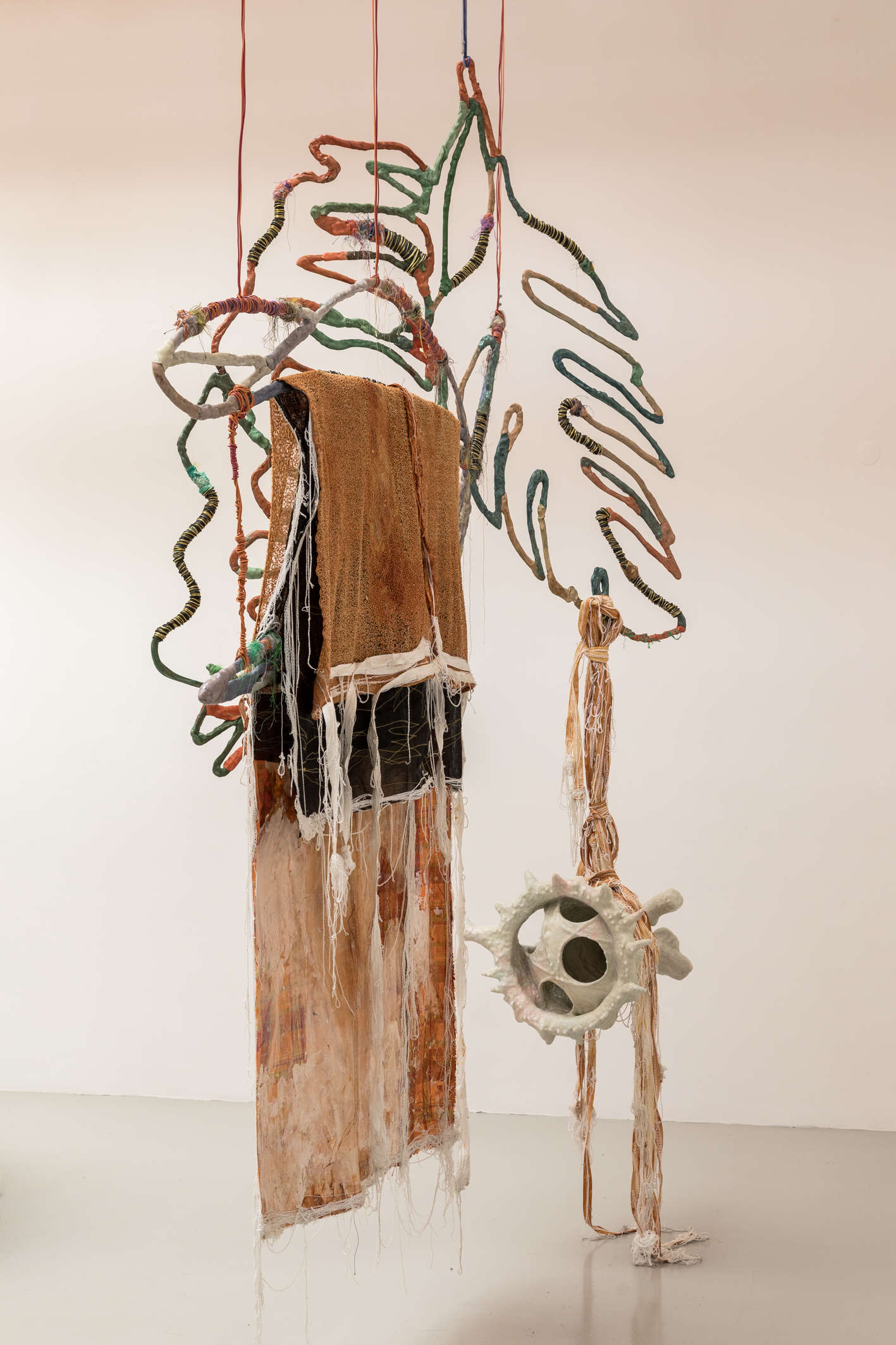
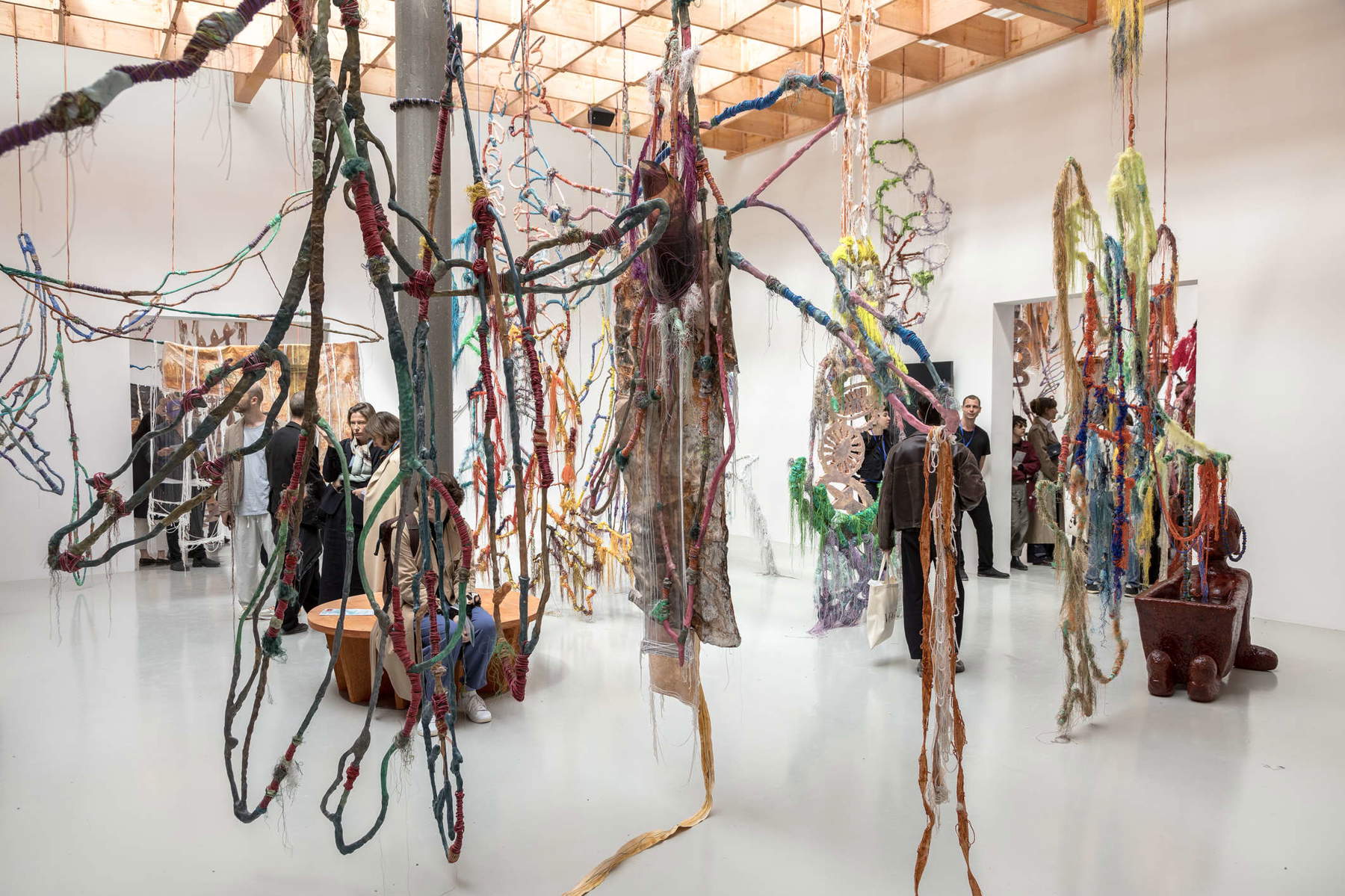
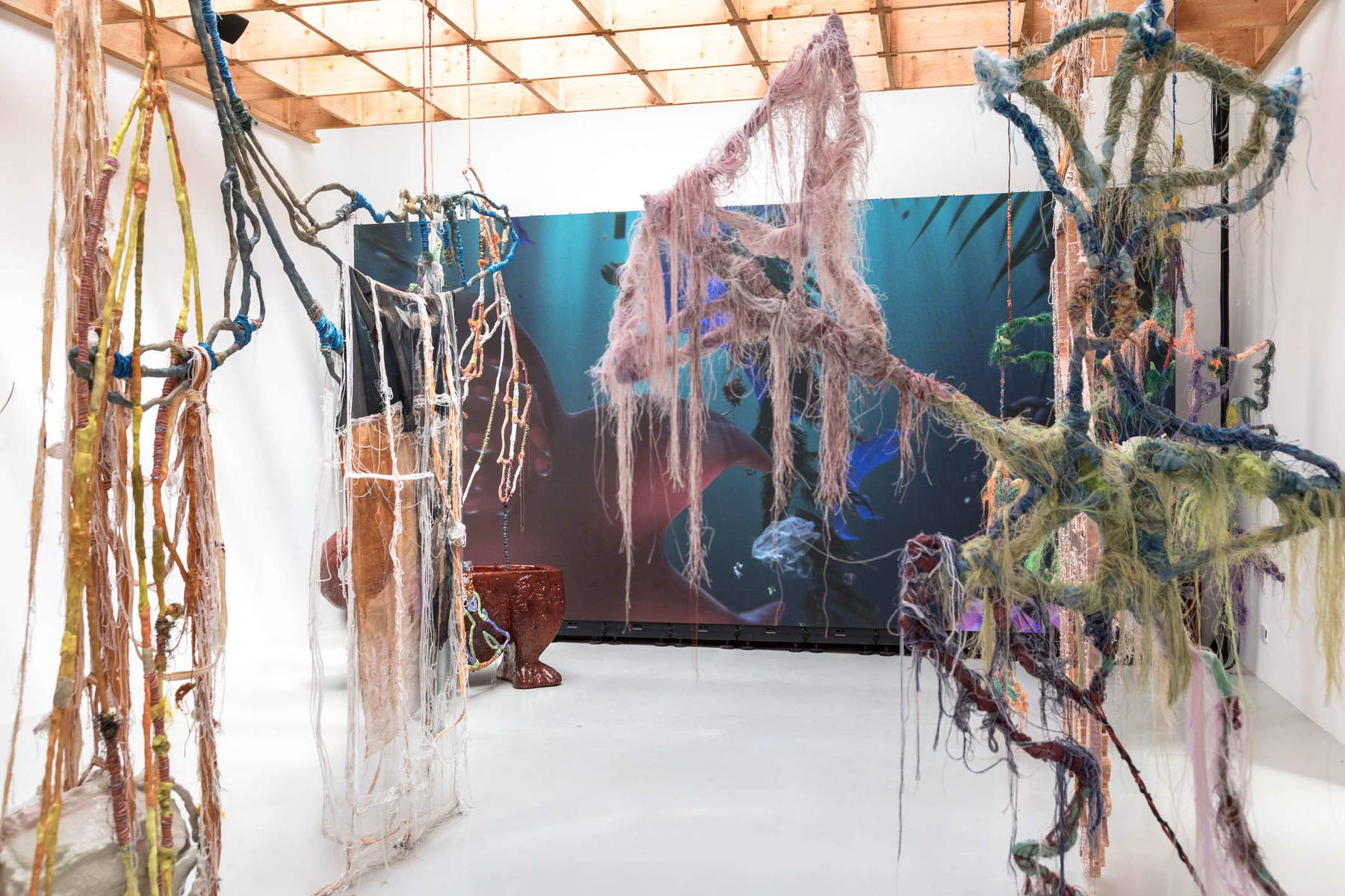
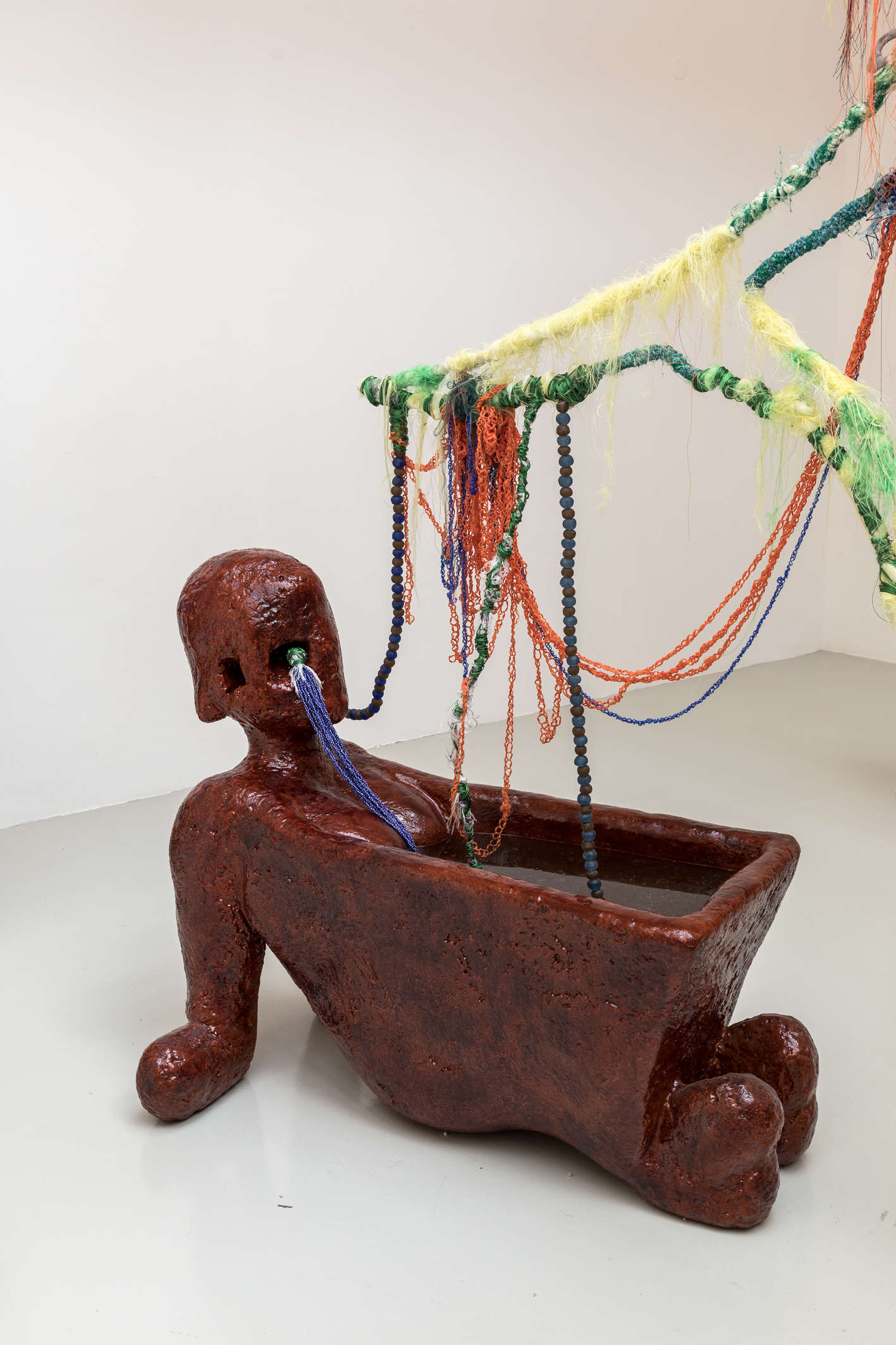
The references hark back to Caribbean andLatin American culture , cultures steeped in myths and idols deeply connected to nature andwater and characterized by an extraordinary polyphonic diversity. It is a world that has much to do with the “marvelous” that Creuzet knows very well, having grown up in Martinique, a Caribbean island that belongs to France, whose culture sees the blending of French and Caribbean influences. One is reminded of what Alejo Carpentier wrote in The Kingdom of This World, when he spoke of the “magic of tropical vegetation” and nature’s “irrepressible creation of forms,” but above all of the marvelousness that arose from a sudden “privileged revelation of reality, from an unusual or singularly favorable illumination of the inadvertent richness of reality,” perceived with a “particular intensity by virtue of an exaltation of the spirit.” A richness that is thus revealed by coming into deep contact with reality itself, by experiencing it.
It is in this sense probably that Creuzet wanted to express with his project how dialogue and exchange within a hybrid society, between people who have different cultures despite having the same nationality, such as between a Frenchman from France and an overseas Frenchman like himself, can reveal a richness that allows the opening of broader visions. And perhaps discover how seemingly distinct cultures can actually have themes in common: the “aquatic” world created by Julien Creuzet in the French pavilion is a tribute to the Caribbean, but does it not also find a term of comparison with Venice, the only Italian city built on water?
Warning: the translation into English of the original Italian article was created using automatic tools. We undertake to review all articles, but we do not guarantee the total absence of inaccuracies in the translation due to the program. You can find the original by clicking on the ITA button. If you find any mistake,please contact us.




























